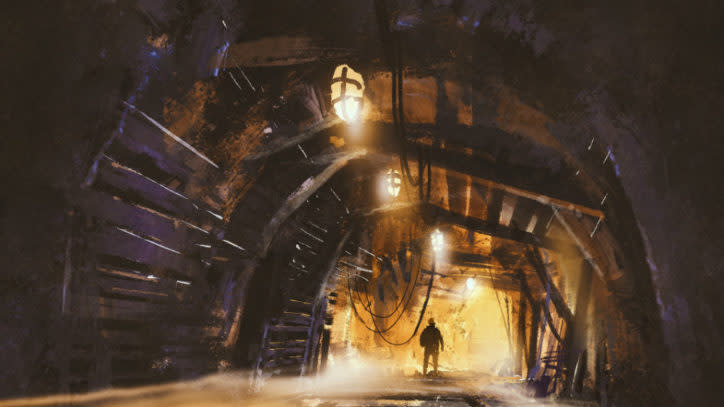Despite the Latest Tragedy — Get Ready for This Junior Gold Miner to Soar

Last month was a very difficult period for junior gold miner Continental Gold Inc. (TSX:CNL). Aside from the negative effect of weaker gold on its share price, the company was rocked by tragedy after suffering two separate attacks on its employees over the course of September 2018, in which four people died.
These incidents, combined with intense media speculation over the security situation in the region of Colombia, where Continental is operating, caused its stock to plunge, shedding 24% over the last month, marking it down by 25% for the year to date. While the latest tragedy has rocked the company and the local Ochali community in the municipality of Yaramul located to the north of Colombia’s second largest city, Medellin, the sell-off of Continental’s stock appears unjustified.
Has security at Continental’s operations deteriorated?
The latest security incident occurred within the boundaries of Continental’s Berlin project which, until the implementation of the peace accord with Colombia’s largest armed group the FARC, had remained dormant. Upon the security situation in the region where Berlin is located improving significantly because of the FARC agreeing to the landmark peace deal and disarming, Continental elected to commence exploration activities at the project. This included engaging with local communities to determine whether a social licence could be established to support the exploitation of the Berlin asset.
What many of the sensationalistic media stories failed to recognize was that Continental had completed a security assessment of the area before its employees commenced working at the project. The miner had also secured guarantees from local authorities that they would ensure security within the immediate vicinity of its operations in the Yaramul municipality.
These guarantees are similar to the guarantees obtained when Continental commenced developing its flagship Buritica gold mining project located over 250 kilometres to the southwest.
It is also worth noting that while the region had been an area of operations for the FARC’s 36th Front and paramilitary groups, security within the municipality had improved significantly in recent years.
After the fiscal pain triggered by the oil slump, the Colombian government committed to establishing a strong precious metals mining industry. This has not only seen authorities provide security guarantees, but has also moved to eliminate illegal artisanal mining, clarify the regulatory environment and create tax incentives to attract further investment.
Berlin is an impressive resource to own
Prior to the collapse of Colombia’s internal security with the advent of “La Violencia” in the wake of the assassination of the popular politician Jorge Gaitan, Berlin had been a functioning gold mine. Between 1930 to 1946, it is estimated that Berlin produced between 400,000 and 700,000 ounces of gold with a remarkable production grade of 16 grams of metal per tonne of ore extracted.
To put this in context, that grade is almost double the 8.4 grams per ton of ore, which has been determined for Continental’s flagship Buritica project. This, along with the major mineralized veins identified at the property, highlights the considerable exploration upside and production potential of the asset.
The Buritica project is on schedule
There is also the flagship Buritica project, which is one of the largest high-quality ore bodies under development globally. It was unaffected by the attack and remains on schedule for its first gold pour to occur during the first half of 2020. The quality of this asset is underscored by the interest received from senior gold miner Newmont Mining Corp., which acquired an almost 20% interest in Continental Gold in 2017.
The mine is expected to be a low cost operation, with forecast average all-in sustaining costs (AISCs) of US$492 per ounce produced over the life of the mine. This illustrates the quality of the asset and the potential profitability of its operations in an environment in which gold is trading at around US$1,200 an ounce.
Should you buy Continental?
The tragic armed assault on Continental’s employees highlights the risks associated with operating in Colombia, but it is certainly not symptomatic of a broader breakdown in security or failings on the part of the company. Continental remains an attractive play on higher gold in a country that has been able to stabilize its internal security and open itself up to foreign investment and tourism after decades of civil conflict.
It isn’t difficult to see the miner’s stock doubling in value once commercial operations successfully commence at its flagship Buritica asset. Because of the timeframe and risks involved with transitioning such an ambitious project to a functioning and commercially operational mine, Continental is long-term investment that investors should consider holding for a minimum of three to five years.
More reading
Should HEXO Corp or Aurora Cannabis Be in Your Weed Stock Portfolio?
This Non-Cannabis Stock Has a Lot of the Upside Without the Risk
Free investor brief: Our 3 top SELL recommendations for 2018
5 Attractive Canadian Stocks to Start Your TFSA Retirement Portfolio
Fool contributor Matt Smith has no position in any stocks mentioned.

 Yahoo Finance
Yahoo Finance 